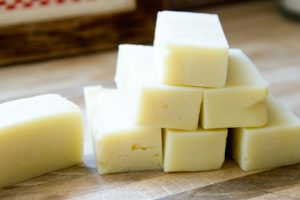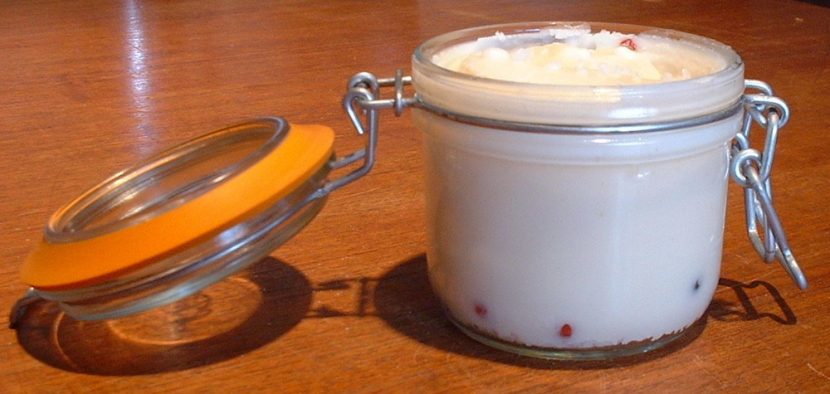Whether you’re stuck in a cramped apartment in the city or living in a suburban starter home while you save up to buy land, there’s no reason you can’t start building your homesteader skills now, as you dream of more self-reliant times ahead. You can check out our guide to how to homestead in a city if you can’t wait to free yourself from the grid, and also start developing the following skills to be ready when the time comes to fully escape the plugged in life:
- Bake your own bread: We tend to take our packaged, fluffy white supermarket loaves for granted, but there is nothing as delicious or satisfying as freshly baked homemade bread. It’s not too difficult to master, and doesn’t require anything more than what you can buy from said supermarket. And in addition to delicious bread, it will provide you with more of a sense of control over what goes into your food and a whole lot of respect for homesteaders of yore-who grew, milled and baked to get their daily bread.
- Pickling and Canning: There’s no reason you need to be growing your own crops to start preserving food. It’s always good to have a nice supply of foods that don’t need to be refrigerated, and really rewarding to make them yourself. Pickling is great because pickled and fermented foods are actually an amazing source of probiotics, and canning your own food is a great way to take advantage of marked-down produce at the supermarket as well as a healthy alternative to most GMO, BPA, toxin-ridden store-bought canned products.
- Render tallow and lard: Mostly a forgotten homesteading art, rendering tallow and lard can be both greatly rewarding and cost-effective. Using often-times free scraps from butcher shops, or, if you’re lucky enough to know a hunter or farmer, the remains of a deer or cow after butchering, tallow and lard can be used in place of conventional oil or store-bought butter and tend to be far more delicious and nutritious.
- Make your own soap: The cost-effectiveness of making one’s own soap is probably the best reason to try it-
 but, like making your own bread or canned products, also gives you a sense of control over what is going in your soap and knowing it’s safe. If you can get over the fear of working with lye, soap-making can be a blast, and odds are you won’t go back after you’ve tried it. Just make sure to follow basic safety precautions and you’ll be making all your family members homemade vanilla-lavender-coconut suds in no time!
but, like making your own bread or canned products, also gives you a sense of control over what is going in your soap and knowing it’s safe. If you can get over the fear of working with lye, soap-making can be a blast, and odds are you won’t go back after you’ve tried it. Just make sure to follow basic safety precautions and you’ll be making all your family members homemade vanilla-lavender-coconut suds in no time! - Butcher a chicken: OK, so odds are, if you live in the city or suburbs, you probably don’t have access to a live chicken, but that doesn’t mean you can’t start practicing butchering now. Most supermarkets and butchers sell whole chicken, and they’re always much cheaper than chicken cuts. It’s a great way to whet your pallet for butchering, and you can use the giblets for gravy and bones for tallow-learning how to use the whole animal will give you a great taste for proper homesteading!
If you liked that, you might also like:

9 thoughts on “Skills to Build While You Wish You Could Homestead”
How about basket making for homesteaders? Growing your own good means you need gathering baskets when picking.
I haven’t mastered or amatured fermenting or pickling. I have done yogurt, kumbucha and the like, but sauerkraut just goes sideways. and what do you guys use for pickling? The only thing available in VT/NH area is store bought white vinegar which is petroleum based. Do you know of another, actually healthy, source of white vinegar?
Thrive Market (online).
I love this kind of stuff. I really could live way out away from it all and do this.
Holly, SAUERKRAUT: I gallon shredded/thin sliced/medium hand or processor chopped cabbage. 2 Tablespoons / 6 teaspoons quality salt (Celtic or Himalayan). Rub or pound the salt into the cabbage until it is wet. Place the cabbage, well packed, into glass jars/crock/even #1 or 2 plastic, keeping the inside of the containers clear of all veg matter.. Place a weight… plastic bag filled with water/smaller water-filled jar w/lid, on top of the cabbage, cover the whole thing with a cloth/paper towel secured with rubber band/string. If liquid in the containers has not reached slightly above the bottom of your weight the next day, add a small amount of water. Let sit at room temperature 1 week+ if chopped, & taste. If sour enough for your taste, remove the weight, serve, & store in the fridge. If shredded, I like to keep fermenting for 1 month. mercola.com & other sites, sell enzymes to use when pickling, rather than using plain salt : ). Vinegar is not used in this method & leaves you with enzymes in the finished product to help with digestion. Pickling methods using vinegar, usually are cooked,so the finished product is sour, as are store bought pickles & have no digestive benefits.
Very good thank you but I am a 87 year old pensioner living by my self No wife
87 year old pensioner sorry very good but cant use
What about Quilting? Thrift stores or old clothing can be used for the top, flannel sheet for batting and big pieces of old shirts sewn together for backing. Making your own bedding from used pieces is very homesteader friendly.
I’ve make new things out of old, 100% cotton bluejeans. I don’t like working with cotton/synthetic fabrics because the tend to ravel and stretch.